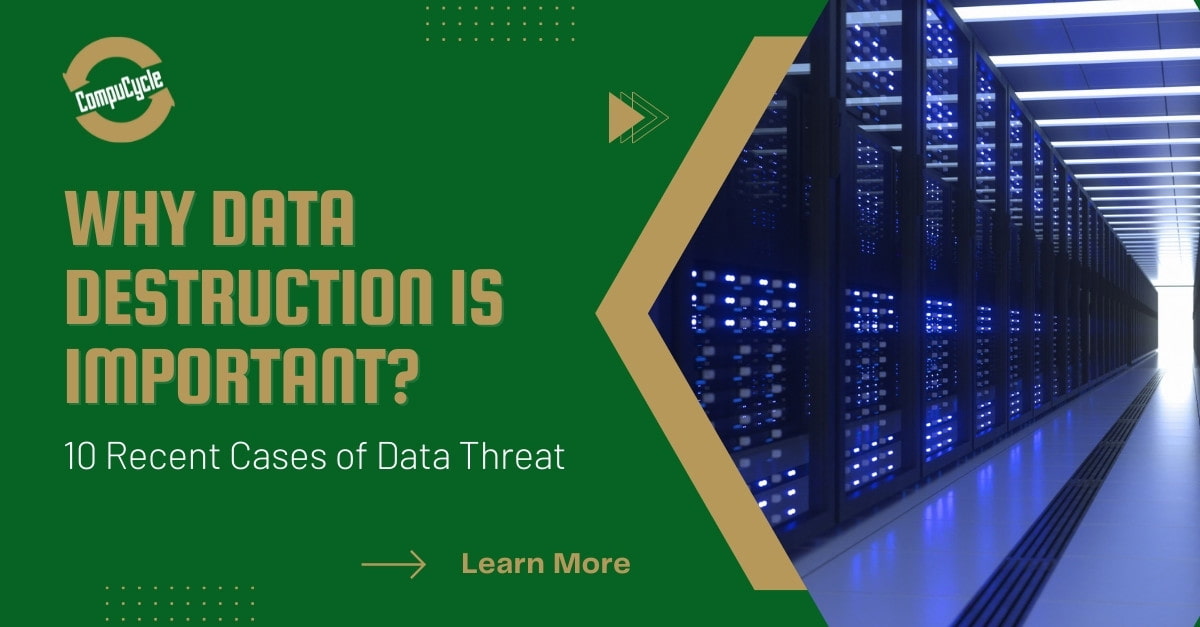How to Integrate Data Destruction Techniques right into Your Cyber Security Strategy
How to Integrate Data Destruction Techniques right into Your Cyber Security Strategy
Blog Article
Checking Out the Significance of Data Destruction in the Context of Computer Security Services and Protecting Confidential Data
In an era where data violations are increasingly common, the significance of effective data destruction can not be overemphasized. When no much longer essential, Organizations must embrace stringent measures to ensure that delicate info is not only shielded throughout its lifecycle but also emphatically removed. The methods used for data removal, coupled with conformity to lawful requirements, play a critical function in preserving privacy and depend on. Nonetheless, the effects of these methods expand beyond mere compliance, influencing a business's track record and operational honesty in the digital industry. What strategies can organizations implement to improve their information destruction methods?
Recognizing Data Destruction
Data devastation is a vital part of computer system safety that entails the irreversible elimination of data from storage tools to avoid unapproved gain access to and potential data violations. In a significantly electronic landscape, organizations encounter increased threats connected with sensitive information being improperly accessed or made use of. Efficient data damage safeguards versus these dangers, making certain that confidential dataâEUR" such as customer info, copyright, and monetary recordsâEUR" can not be recouped after disposal.
Understanding the significance of data devastation extends past mere conformity with legal and regulative structures; it is necessary for keeping business honesty and trust fund. When information is incorrectly handled or inadequately damaged, the repercussions can be serious, including economic loss, reputational damages, and legal liabilities.

Techniques of Data Eradication

One widespread approach is information cleaning, which entails overwriting existing information with arbitrary patterns numerous times. This strategy provides the initial information irretrievable, making it a preferred choice for organizations seeking to protect secret information.
An additional approach is degaussing, which makes use of a powerful magnetic field to disrupt the magnetic domains on storage devices, efficiently getting rid of the information. This strategy is specifically effective for magnetic media however is not relevant to solid-state drives.
Physical destruction is one more durable approach, squashing or involving the shredding of storage tools. This method warranties that data recuperation is virtually impossible, making it optimal for extremely delicate details.
Finally, security can serve as a corresponding technique to data elimination. By encrypting information before deletion, companies can add an additional layer of security, making sure that even if residues are recuperated, they remain hard to reach without the decryption secret. Each method needs to be selected based upon the level of information sensitivity and the specific protection demands of the company.
Legal Conformity and Data Protection
Organizations have to browse a complex landscape of lawful demands connected to data protection, particularly after executing approaches of information removal. Different guidelines, such as the General Information Protection Guideline (GDPR) and the Medical Insurance Transportability and Accountability Act (HIPAA), enforce strict standards on exactly how organizations should handle and get rid of of sensitive information. Failure to follow these policies can lead to substantial legal effects, including considerable penalties and reputational damage.
Information damage procedures need to be carefully recorded to demonstrate compliance with suitable regulations and requirements. This documents not only offers as proof of adherence to legal commitments however also illustrates a dedication to securing sensitive info. Organizations should additionally develop clear policies pertaining to information retention and devastation timelines, making sure that information is not held longer than required.

Furthermore, normal audits and analyses of information destruction practices are vital to preserve compliance and adapt to advancing lawful frameworks (data destruction). By proactively dealing with legal needs, companies can alleviate risks related to data breaches and show their dedication to data safety and security. Ultimately, prioritizing lawful conformity in information devastation procedures is not simply a regulative commitment, but an essential facet of a robust data safety and security approach
Effect On Service Online Reputation
The track record of a business can be dramatically influenced by its strategy to data damage and monitoring. In today's digital landscape, where data violations can happen anytime, the failing to effectively deal with sensitive information can lead to extreme consequences. Organizations that inadequately handle data damage risk subjecting confidential customer info, which not only violates personal privacy laws yet also deteriorates count on among stakeholders and customers.
A damaged credibility can result in lowered consumer commitment, as clients become hesitant to engage with a business that has actually shown neglect in shielding their information. Furthermore, unfavorable promotion surrounding a data violation can discover this info here have a long-term result, as prospective consumers might be hindered by the regarded absence of protection. This can bring about a straight decrease in revenue and market share.
Additionally, businesses that visit this page prioritize data damage as component of their safety method can improve their online reputation by showcasing their dedication to guarding delicate details. By taking on stringent data management practices, organizations can not only alleviate threats but also position themselves as credible entities in their particular sectors, therefore reinforcing their total brand name photo.

Best Practices for Secure Disposal
Carrying out finest techniques for secure disposal of information is essential for mitigating risks related to data violations and guaranteeing compliance with personal privacy regulations. Organizations needs to adopt a thorough data disposal plan that describes treatments for both electronic and physical data devastation.
For physical data storage space devices, such as disk drives, shredding or degaussing is suggested to avoid data recovery. In addition, companies should keep a chain of custody documentation throughout the disposal process, guaranteeing responsibility and traceability of disposed products.
For electronic data, utilizing software websites program that sticks to market criteria for information wiping is important. This software must overwrite existing information numerous times, making recuperation practically impossible. It is additionally crucial to verify the efficiency of the data destruction process with audits or third-party analyses.
Training employees on safe disposal techniques includes an additional layer of safety and security, as human error can usually lead to data direct exposure. Frequently evaluating and upgrading disposal plans makes certain alignment with evolving regulations and technological developments. By applying these best practices, organizations can significantly decrease the risk of unauthorized data access and boost their total information defense approach.
Verdict
In verdict, information damage is an essential facet of computer system security solutions that ensures the protection of personal details from unapproved gain access to. Executing effective methods of information elimination, adhering to legal conformity, and acknowledging the effect on company credibility are important parts of a thorough information safety and security strategy. By taking on finest practices for secure disposal, companies can promote trust with customers and secure delicate data, inevitably adding to a more secure electronic landscape.
In an era where information breaches are increasingly usual, the relevance of effective information destruction can not be overemphasized.Information destruction is a critical part of computer security that includes the permanent removal of data from storage space devices to protect against unauthorized accessibility and prospective information breaches. Organizations needs to likewise establish clear plans relating to information retention and damage timelines, making sure that information is not held longer than essential.
By proactively attending to lawful requirements, companies can minimize risks connected with information breaches and show their dedication to data safety (data destruction). Inevitably, prioritizing lawful conformity in data damage procedures is not simply a regulatory responsibility, but an essential facet of a robust information safety strategy
Report this page